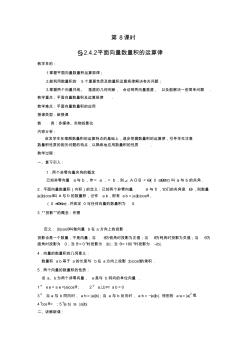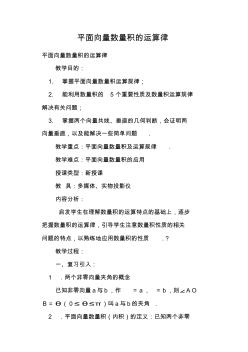Preface
1 Basic Concept and Linearized Problem of Systems
1.1 Basic Concept and Variable Transformation
1.2 Resultant of the Weierstrass Polynomial and Multiplicity of a Singular Point
1.3 Quasi—Algebraic Integrals of Polynomial Systems
1.4 Cauchy Majorant and Analytic Properties in a Neighborhood of an Ordinary Point
1.5 Classification of Elementary Singular Points and Linearized Problem
1.6 Node Value and Linearized Problem of the Integer—Ratio Node
1.7 Linearized Problem of the Degenerate Node
1.8 Integrability and Linearized Problem of Weak Critical Singular Point
1.9 Integrability and Linearized Problem of the Resonant Singular Point
2 Focal Values, Saddle Values and Singular Point Values
2.1 Successor Functions and Properties of Focal Values
2.2 Poincare Formal Series and Algebraic Equivalence
2.3 Linear Recursive Formulas for the Computation of Singular Point Values
2.4 The Algebraic Construction of Singular Values
2.5 Elementary Generalized Rotation Invariants of the Cubic Systems
2.6 Singular Point Values and Integrability Condition of the Quadratic Systems
2.7 Singular Point Values and Integrability Condition of the Cubic Systems Having Homogeneous Nonlinearities
3 Multiple Hopf Bifurcations
3.1 The Zeros of Successor Functions in the Polar Coordinates
3.2 Analytic Equivalence
3.3 Quasi Successor Function
3.4 Bifurcations of Limit Circle of a Class of Quadratic Systems
4 Isochronous Center In Complex Domain
4.1 Isochronous Centers and Period Constants
4.2 Linear Recursive Formulas to Compute Period Constants
4.3 Isochronous Center for a Class of Quintic System in the Complex Domain
4.3.1 The Conditions of Isochronous Center Under Condition C1
4.3.2 The Conditions of Isochronous Center Under Condition C2
4.3.3 The Conditions oflsochronous Center Under Condition C3
4.3.4 Non—Isochronous Center under Condition C4 and C1
4.4 The Method of Time—Angle Difference
4.5 The Conditions of Isochronous Center of the Origin for a Cubic System
5 Theory of Center—Focus and Bifurcation of Limit Cycles at Infinity of a Class of Systems
5.1 Definition of the Focal Values of Infinity
5.2 Conversion of Questions
5.3 Method of Formal Series and Singular Point Value of Infinity
5.4 The Algebraic Construction of Singular Point Values of Infinity
5.5 Singular Point Values at Infinity and Integrable Conditions for a Class of Cubic System
5.6 Bifurcation of Limit Cycles at Infinity
5.7 Isochronous Centers at Infinity of a Polynomial Systems
5.7.1 Conditions of Complex Center for System (5.7.6)
5.7.2 Conditions of Complex Isochronous Center for System (5.7.6)
6 Theory of Center—Focus and Bifurcations of Limit Cycles for a Class of Multiple Singular Points
6.1 Succession Function and Focal Values for a Class of Multiple Singular Points
6.2 Conversion of the Questions
6.3 Formal Series, Integral Factors and Singular Point Values for a Class of Multiple Singular Points
6.4 The Algebraic Structure of Singular Point Values of a Class of Multiple Singular Points
6.5 Bifurcation of Limit Cycles From a Class of Multiple Singular Points
6.6 Bifurcation of Limit Cycles Created from a Multiple Singular Point for a Class of Quartic System
6.7 Quasi Isochronous Center of Multiple Singular Point for a Class of Analytic System
7 On Quasi Analytic Systems
7.2 Reduction of the Problems
7.3 Focal Values, Periodic Constants and First Integrals of (7.2.3)
7.4 Singular Point Values and Bifurcations of Limit Cycles of Quasi—Quadratic Systems
7.5 Integrability of Quasi—Quadratic Systems
7.6 Isochronous Center of Quasi—Quadratic Systems
7.6.1 The Problem of Complex Isochronous Centers Under the Condition of C1
7.6.2 The Problem of Complex Isochronous Centers Under the Condition of C2
7.6.3 The Problem of Complex Isochronous Centers Under the Other Conditions
7.7 Singular Point Values and Center Conditions for a Class of Quasi—Cubic Systems
8 Local and Non—Local Bifurcations of Perturbed Zq—Equivariant Hamiltonian Vector Fields
8.1 Zq—Equivariant Planar Vector Fields and an Example
8.2 The Method of Detection Functions: Rough Perturbations of Zq— Equivariant Hamiltonian Vector Fields
8.3 Bifurcations of Limit Cycles of a 22— Equivariant Perturbed Hamiltonian Vector Fields
8.3.1 Hopf Bifurcation Parameter Values
8.3.2 Bifurcations From Heteroclinic or Homoclinic Loops
8.3.3 The Values of Bifurcation Directions of Heteroclinic and Homoclinic Loops
8.3.4 Analysis and Conclusions
8.4 The Rate of Growth of Hilbert Number H (n,) with n
8.4.1 Preliminary Lemmas
8.4.2 A Correction to the Lower Bounds of H (2k—1) Given in (Christopher and Lloyd, 1995)
8.4.3 A New Lower Bound for H (2k—1)
8.4.4 Lower Bound for H(3×2k—1—1)
9 Center—Focus Problem and Bifurcations of Limit Cycles for a Z2—Equivariant Cubic System
9.1 Standard Form of a Class of System (E3Z2)
9.2 Liapunov Constants, Invariant Integrals and the Necessary and Sufficient Conditions of the Existence for the Bi—Center
9.3 The Conditions of Six—Order Weak Focus and Bifurcations of Limit Cycles
9.4 A Class of (E3Z2) System With 13 Limit Cycles
9.5 Proofs of Lemma 9.4.1 and Theorem 9.4.1
9.6 The Proofs of Lemma 9.4.2 and Lemma 9.4.3
10 Center—Focus Problem and Bifurcations of Limit Cycles for Three—Multiple Nilpotent Singular Points
10.1 Criteria of Center—Focus for a Nilpotent Singular Point
10.2 Successor Functions and Focus Value of Three—Multiple Nilpotent Singular Point
10.3 Bifurcation of Limit Cycles Created from Three—Multiple Nilpotent Singular Point
10.4 The Classification of Three—Multiple Nilpotent Singular Points and Inverse Integral Factor
10.5 Quasi—Lyapunov Constants For the Three—Multiple Nilpotent Singular Point
10.6 Proof of Theorem 10.5.2
10.7 On the Computation of Quasi—Lyapunov Constants
10.8 Bifurcations of Limit Cycles Created from a Three—Multiple Nilpotent Singular Point of a Cubic System
Bibliography
Index

 §2.4.2平面向量数量积的运算律
§2.4.2平面向量数量积的运算律

 平面向量数量积的运算律
平面向量数量积的运算律